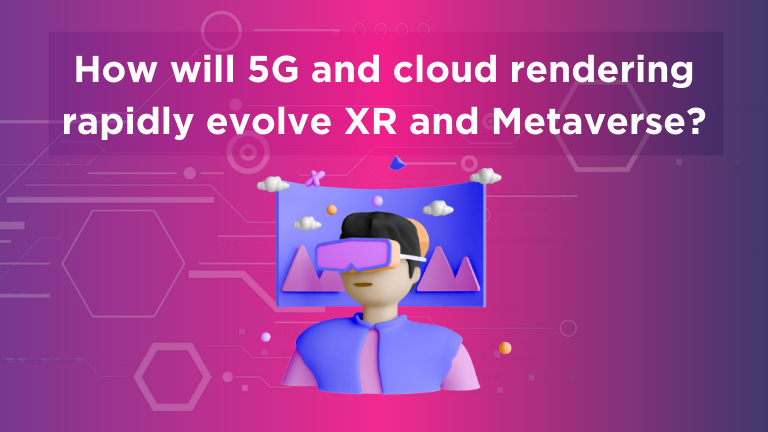Revolutionising Industries with Digital Twin and Immersive Technology
Digital twin technology is transforming industries, shaping the future of extended reality experiences, business processes, and the enterprise metaverse. By integrating innovations such as prototyping software and IoT (Internet of Things) sensors, digital twins are creating a wealth of new experiences and opportunities.
These technologies provide businesses with predictive capabilities to minimise risks, enhance customer experiences, enable remote monitoring, and accelerate production cycles. The diverse applications of digital twin and immersive technologies have driven rapid adoption across nearly all business sectors.
According to a report, only 5% of organisations aren’t planning to include digital twins in their digital transformation strategy.
Here’s a guide to digital twin technology and its role in the future of extended reality.

What is Digital Twin Technology?
Digital twins are virtual models of physical objects, processes, systems, or components. They reflect the assets they represent throughout their lifecycle, using real-time data from IoT sensors to simulate behaviours and monitor operations.
Different types of digital twins exist in the enterprise landscape, each replicating various real-world entities. For example, a digital twin might represent a machine or a component in a construction setting, or it could replicate entire processes, cities, or even people.
Digital twins combine data from multiple sources with visualisations, often powered by immersive technologies. However, a simple 3D visualisation alone doesn’t make a digital twin; what sets it apart can simulate real-world behaviour. For example, a digital twin of a production line could provide insights into energy consumption, equipment downtime, and project completion times.
The data gathered by digital twins offers numerous benefits for businesses, such as faster time to market, improved decision-making, and increased productivity. McKinsey found that 70% of C-suite technology executives in large companies are using digital twins to boost profitability, efficiency, and performance.
Evolving Use Cases for Digital Twin and Immersive Technology
When combined with immersive technology and the metaverse, digital twin technology supports a range of use cases across industries. Companies are discovering new ways to leverage these technologies together to enhance business outcomes.
Here are some examples of how various sectors are utilising digital twin and immersive technologies:
Digital Twins in Aerospace
In the complex aerospace industry, digital twin technology unlocks opportunities in design, engineering, assembly, and maintenance. Companies can use digital twins and immersive technology for 3D visualisation, design collaboration, and prototype evaluation. Additionally, AR, VR, and MR systems can train team members using digital twins to improve safety and skill development. Digital twins also streamline maintenance, inspections, and repair processes.
Digital Twins in Manufacturing
In manufacturing, digital twin technology allows companies to simulate and test new design concepts before production. This optimises processes, reduces risks, and encourages rapid innovation. Digital process twins are vital to the fourth industrial revolution, improving factory design, robot training, and maintenance strategies. In the automotive sector, digital twins enhance 3D car design and the development of systems like autonomous driving.
Digital Twins in Architecture and Construction
Digital twin technology is revolutionising architecture and construction, enabling better design visualisation and collaboration. Immersive technology helps communicate design strategies to stakeholders and offers virtual walkthroughs of buildings. In construction, digital twins enhance project management, safety training, and the development of sustainable, comfortable buildings.
Digital Twins in Media, Art, and Entertainment
Digital twins and immersive technology are creating new opportunities in media, art, and entertainment. They have revolutionised film and TV production, as seen in projects like “The Mandalorian,” where virtual environments are used for filming. Museums and galleries can also use digital twins to create virtual exhibits in the metaverse, making art more accessible globally. The integration of generative AI with digital twins is advancing interactive experiences in gaming and customer service.
Digital Twins in Infrastructure and Smart City Development
Digital twin technology is essential for city planners and developers, helping them maximise space and optimise infrastructure. Live IoT data and interactive models facilitate understanding of environmental dynamics, from traffic patterns to weather risks. This technology aids in designing efficient workspaces, reducing costs, and minimising carbon footprints. On a larger scale, digital twins assist governments in planning urban environments, enhancing human experiences, and combating climate change. By 2025, up to 500 cities are expected to be using digital twin technology.
Digital Twins in the Energy Sector
In the energy sector, digital twin technology aids in optimising processes, reducing consumption, and managing costs. Companies use digital twins and immersive technology to create 3D models of energy sites, improving decision-making, training, and customer service. For example, some companies use augmented reality combined with digital twins for rapid troubleshooting and field support.
Digital Twins in the Retail Space
Digital twin technology is increasingly used in retail and e-commerce, enhancing design, planning, and customer service. Retailers use digital twins to create virtual stores in the metaverse and experiment with product designs. This technology also benefits sales and marketing teams by improving customer interactions. Companies like eBay have implemented AI-powered 3D displays to showcase digital twins of products, offering customisation options to customers.
Digital Twin Technology and the Enterprise Metaverse
Digital twin technology and immersive technology are key components of the emerging enterprise metaverse. As these technologies evolve, new opportunities arise for businesses to simulate and optimise various aspects of their operations. Retailers, for example, can link digital twins of their stores with supply chains, customer service centres, and warehouses, creating an interconnected virtual environment.
This interconnected system allows for data sharing across the organisation, enabling simulations that improve production, design, fulfilment, and customer service. Companies like Nike are already exploring this by offering metaverse environments where customers can interact with products, customise items, and engage with customer service in virtual reality.
The digital twin ecosystem enhances customer experiences and business differentiation and provides access to valuable data. Insights into customer journeys, business processes, and performance metrics enable more informed decisions about future growth.
The Future of Digital Twin Technology and Immersive Technology
Digital twins and immersive technologies are pillars of digital transformation, shaping the future metaverse, optimising operations, and enhancing product development. As innovations in metaverse technologies, extended reality, and artificial intelligence continue, the benefits for digital twin adopters will only grow.
However, to fully harness the potential of digital twin technology, organisations need the right talent. Experts in digital design, the metaverse, and immersive technology are essential for building comprehensive digital twins that provide actionable insights and transform experiences for both employees and customers.



